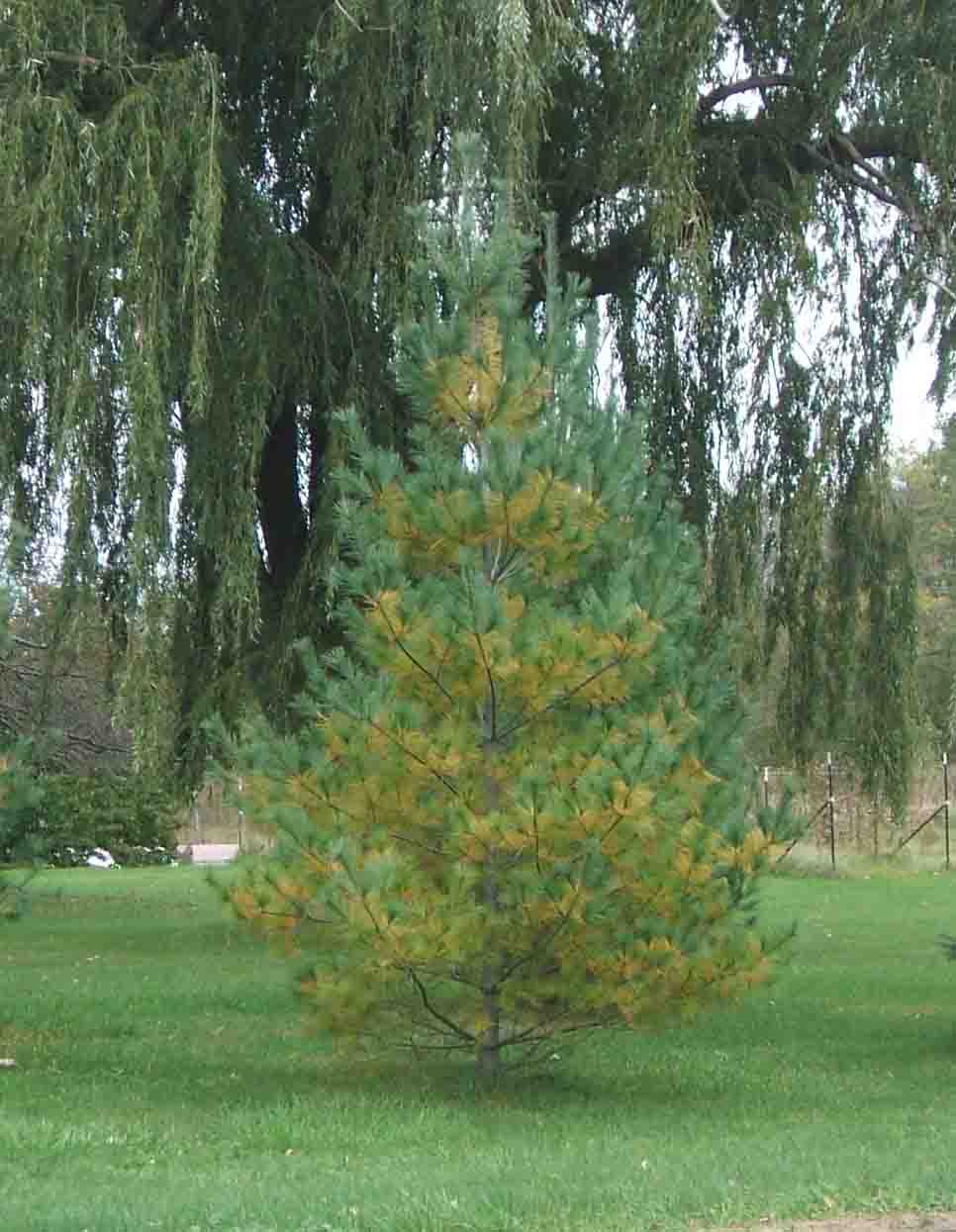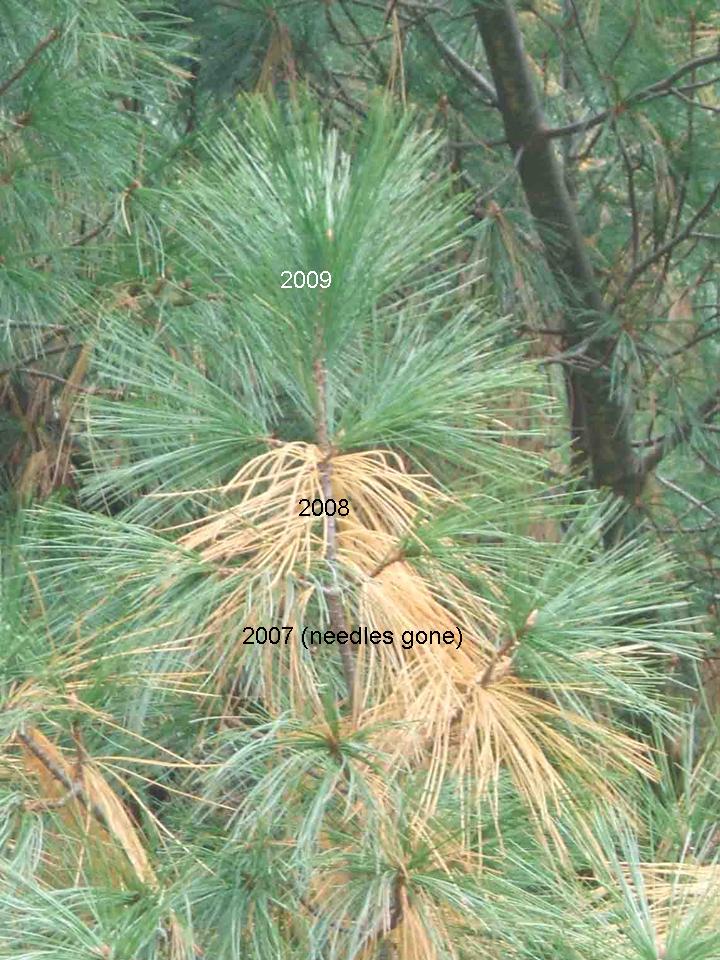In last week’s post I mentioned that many tree problems can be difficult to diagnose and require a thorough inspection and site analysis to get to the root of the problem. In contrast, a recent issue that has generated a lot of calls is easy to explain and is not a cause for major concern. Many homeowners and others are alarmed that needles on their white pines are turning bright yellow.

“Is my pine dying?”
The key in assessing this situation is looking at which needles are turning color. Except for southern pines, most conifers produce only one, single flush of new needles each spring. Because of this, we can work our way down a shoot and tell when each group of needles was formed. The outermost needles were formed in the current year, needles in the next internode were formed the year before, needles formed in the next internode were formed the year before that, and so on. Most evergreen conifers keep their needles for 3-6 years and then the needles senesce and fall off. The longest-lived needles, perhaps not surprisingly belong to bristlecone pines, which are also the longest living trees on earth. Bristlecone pines, the oldest of which is over 4,500 years old, have needles that persist for 13 to 17 years. But I digress, back to the white pine. White pine needles last 2 or 3 years. Each fall, many of the previous year’s needles turn yellow and senesce. Since the needles often turn bright yellow and almost half the needles on the tree are affected it can certainly grab attention. As long as only older needles are turning, the process is natural and there’s no need for concern. On the other hand, if this year’s needles are dropping that’s another issue and warrant further investigation.

White pines don’t keep their needles very long. As long as this year’s needles aren’t senescing, the tree should be OK.
Pining to learn more about conifers? The Gymnosperm database http://www.conifers.org/ is an awesome and authoritative site that has information on just about every conifer known to science.
Great post Bert! I especially appreciate the visual with the years, and the link to the conifer site. Hadn't seen that one before. Out here we get a lot of questions (i.e. why is my tree dying) when the larches and cypress start dropping all their leaves. Leave it to evergreens to not necessarily be evergreen!
Pun intended, Linda?
But of course!
I've never been a big conifer fan, but this was a nice concise bit of useful information. And I liked you random bit of information on bristlecones.
Nice article, Bert! Actually, lots of great articles on this blog. Kudos to all four of you for doing this. This is a great resource that I will promote to our Master Gardener volunteers. Thank you. (BTW I love the blog name!)
Thanks, Mary! I'm glad you found us. I hope you and your volunteers will participate as you're able.